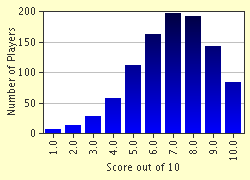Quiz Answer Key and Fun Facts
1. Is it true that you can think of your binoculars as just a pair of small telescopes, mounted side by side?
2. The numbers on your binoculars, like 6x35, 7x50, 8x50, etc., refer to what?
3. So, you're outside at night with your binoculars. The most obvious astronomical feature in the sky is, of course, the moon. Which of these lunar features can you see with binoculars?
4. Which of these planetary features can you see in binoculars?
5. This star cluster is great for beginning binocular astronomers to look at. It's obvious to the naked eye, so much so that is often confused with the Little Dipper, and it looks beautiful in binoculars. It's actually too big to fit the whole thing in most telescopes' field of view. What is this famous star cluster in Taurus?
6. Globular star clusters are compact, spherical groups of hundreds of thousands of stars, and they form a somewhat spherical distribution around the Milky Way galaxy. Unlike open star clusters, they tend to look like fuzzy blobs, even with telescopes. Which of these constellations contain binocular-visible globular clusters?
7. Albireo, Beta Cygni, is a lovely double star to look at in binoculars. What color are the two stars?
8. Nebulae are also lovely things to look at in binoculars. Which famous nebula, visible to the naked eye as a fuzzy star, looks just a whole lot better in binoculars?
9. You won't be able to see many galaxies in binoculars unless you have a really dark sky and really big binoculars. But, this spiral galaxy, a close neighbor of the Milky Way, can be easily seen with 7 x 50 binoculars even in my light-polluted suburban back yard.
10. You're thinking you'd maybe like to do some backyard binocular astronomy. Three of these would be useful, but which is NOT essential equipment?
Source: Author
pu2-ke-qi-ri
This quiz was reviewed by FunTrivia editor
crisw before going online.
Any errors found in FunTrivia content are routinely corrected through our feedback system.

